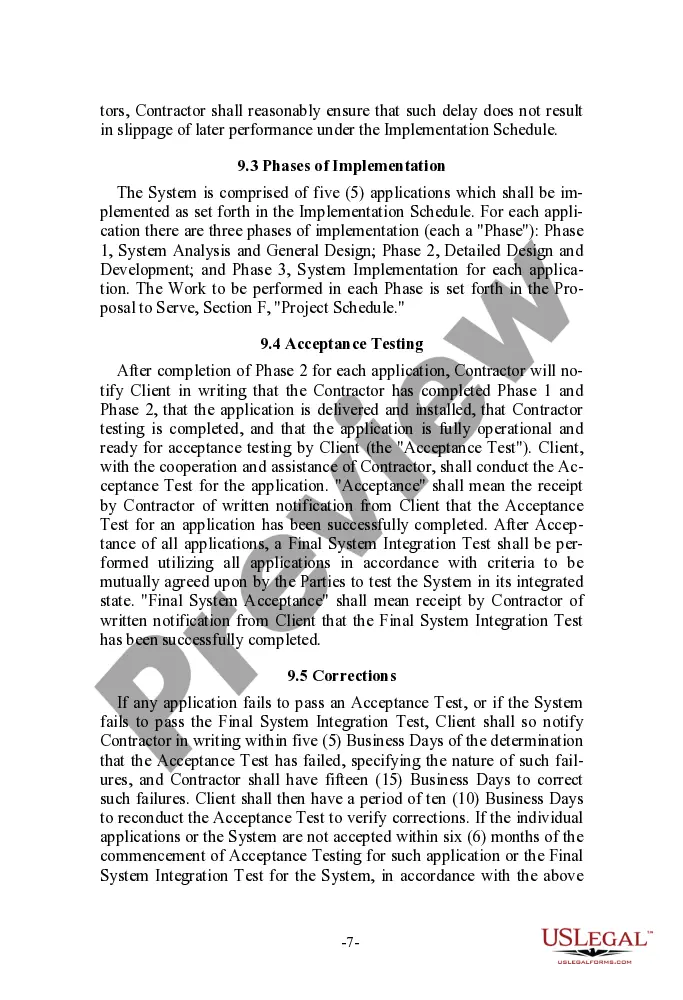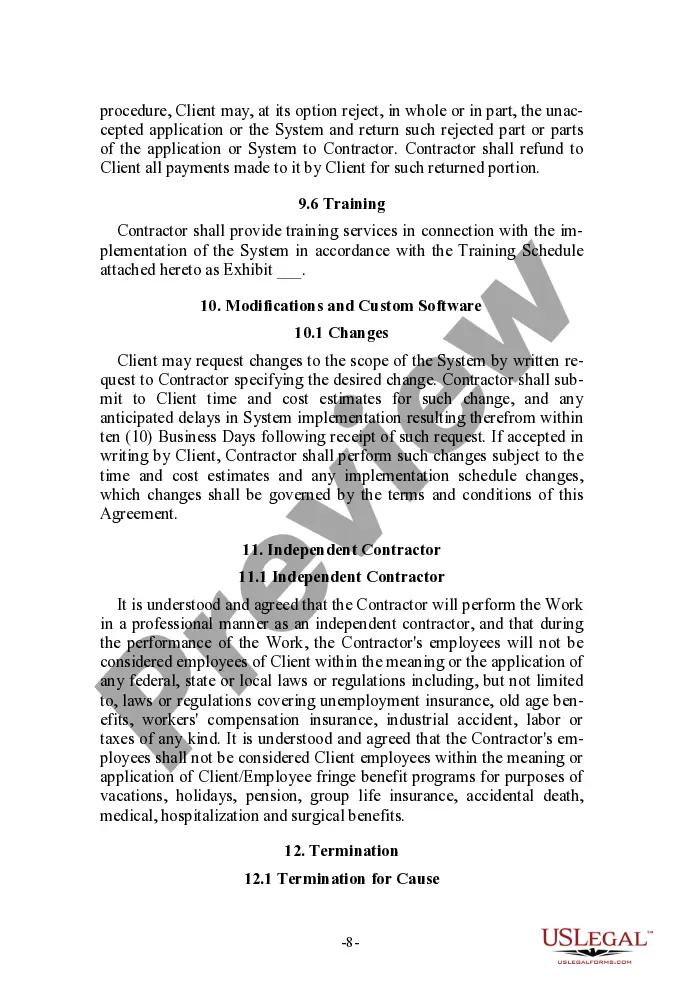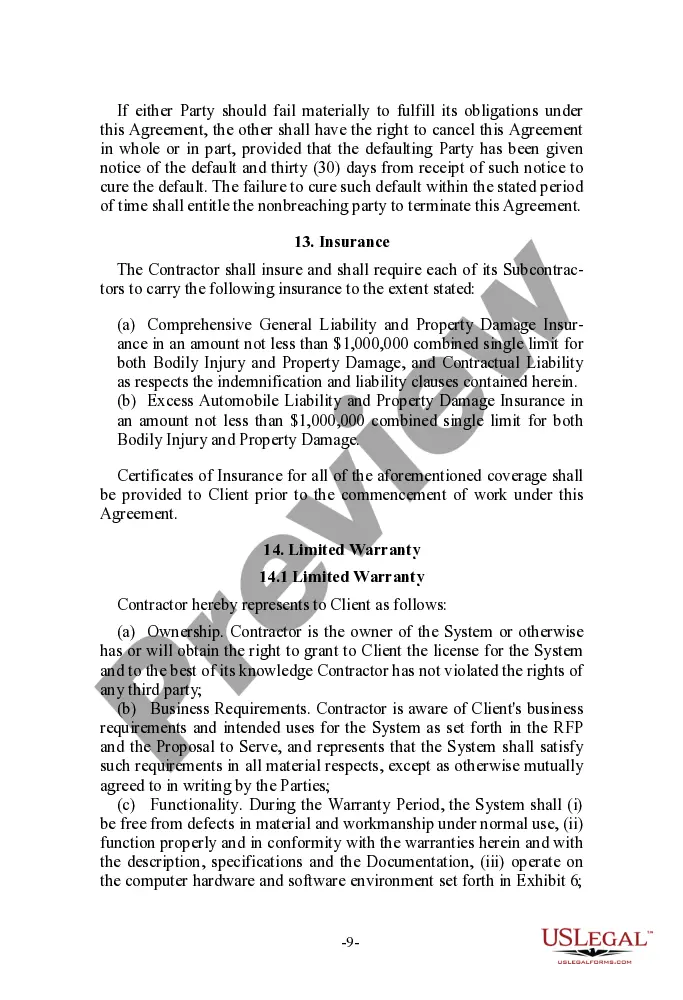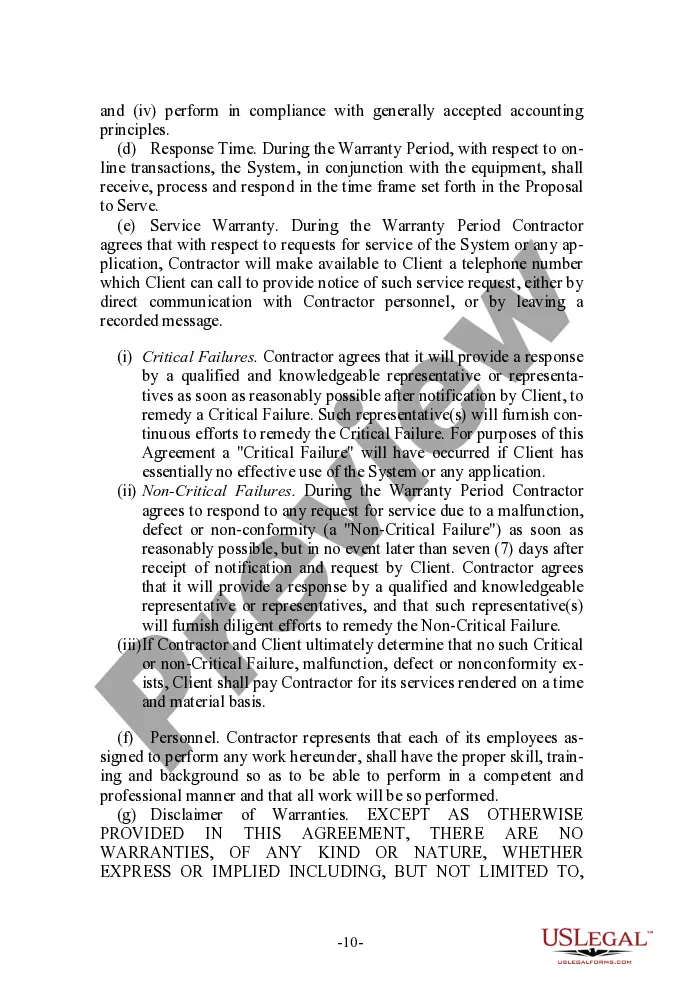The Harris Texas Agreement for System Procurement and Integration is a comprehensive and detailed contract that outlines the terms and conditions for the procurement and integration of systems by Harris Corporation in the state of Texas. This agreement is specifically designed for government agencies and organizations that require advanced and efficient systems to fulfill various operational needs. Key features of the Harris Texas Agreement for System Procurement and Integration include: 1. Scope of Work: The agreement clearly defines the scope of work and the systems to be procured and integrated. It encompasses a wide range of systems such as communication, security, surveillance, and monitoring systems. 2. Technical Specifications: The agreement provides specific technical specifications for each system, ensuring that the procured and integrated systems meet the requirements and standards of the client. 3. Pricing and Payment Terms: Detailed pricing structures are included in the agreement, allowing the client to have a comprehensive understanding of the cost breakdown for system procurement and integration. Payment terms, including milestones, are also outlined to ensure a smooth financial process. 4. Project Timelines and Deliverables: The agreement establishes a clear timeline for the procurement and integration process, including deadlines for key deliverables. This helps in ensuring that the project stays on track and is completed within the agreed-upon timeframe. 5. Warranty and Support: The agreement addresses warranty periods for the procured and integrated systems, as well as the support and maintenance services provided by Harris Corporation. It outlines the terms and conditions for resolving any issues or defects that may arise during the warranty period. Different types of Harris Texas Agreement for System Procurement and Integration may include: 1. Communication Systems Agreement: Specifically tailored for government agencies or organizations that require advanced communication systems, such as radio communication networks, emergency communication systems, or wireless communication solutions. 2. Security Systems Agreement: Designed for clients seeking comprehensive security solutions, including access control systems, surveillance camera systems, alarm systems, and video management systems. 3. Surveillance Systems Agreement: This agreement focuses on the procurement and integration of advanced surveillance systems such as CCTV cameras, facial recognition systems, and analytics software. 4. Monitoring Systems Agreement: For clients needing specialized monitoring systems, such as environmental monitoring systems, traffic management systems, or industrial process monitoring systems. By entering into a Harris Texas Agreement for System Procurement and Integration, government agencies and organizations in Texas can leverage Harris Corporation's expertise and technology to effectively meet their operational needs and enhance their overall efficiency and security.
Harris Texas Agreement for System Procurement and Integration
Description
How to fill out Harris Texas Agreement For System Procurement And Integration?
Preparing legal paperwork can be cumbersome. Besides, if you decide to ask a lawyer to write a commercial contract, papers for proprietorship transfer, pre-marital agreement, divorce paperwork, or the Harris Agreement for System Procurement and Integration, it may cost you a fortune. So what is the most reasonable way to save time and money and draw up legitimate forms in total compliance with your state and local laws and regulations? US Legal Forms is a great solution, whether you're looking for templates for your individual or business needs.
US Legal Forms is the most extensive online catalog of state-specific legal documents, providing users with the up-to-date and professionally checked forms for any use case accumulated all in one place. Consequently, if you need the latest version of the Harris Agreement for System Procurement and Integration, you can easily locate it on our platform. Obtaining the papers requires a minimum of time. Those who already have an account should check their subscription to be valid, log in, and pick the sample with the Download button. If you haven't subscribed yet, here's how you can get the Harris Agreement for System Procurement and Integration:
- Glance through the page and verify there is a sample for your region.
- Check the form description and use the Preview option, if available, to make sure it's the sample you need.
- Don't worry if the form doesn't satisfy your requirements - search for the correct one in the header.
- Click Buy Now when you find the needed sample and choose the best suitable subscription.
- Log in or sign up for an account to pay for your subscription.
- Make a transaction with a credit card or via PayPal.
- Opt for the file format for your Harris Agreement for System Procurement and Integration and download it.
Once finished, you can print it out and complete it on paper or upload the samples to an online editor for a faster and more practical fill-out. US Legal Forms allows you to use all the documents ever obtained multiple times - you can find your templates in the My Forms tab in your profile. Give it a try now!










